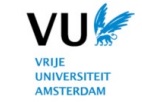Summary
The Green Deal Dutch Soy is a contract between national government, regional governments, a soy processer / feed producer, and farmers. They aim at establishing a viable production chain for soy in the Netherlands, by identifying the most suitable varieties and ensuring a solid soy production volume that allows a viable chain, with fair prices for soy farmers. Being a legume crop, soy can sequester nitrogen in the soil, with that reducing the need for fertilizers in the follow up crop and benefiting soil quality in the long run. Furthermore, increasing the soy area in the Netherlands can have a positive impact on biodiversity. The Green Deal Dutch Soy is a set of non-binding commitments.
Objectives
The Green Deal Dutch Soy aims to realise 10 000 ha/year harvested area and an average yield of at least 3500 kg/ha.
Data and Facts - Contract
Participation: The Green Deal Dutch Soy is a contract between the national government (ministries of Ecomomic Affairs, and Infrastructure and Environment), the province level governments (Friesland, Groningen, Drenthe), and a feed company (Agrifirm) that has contracts with soy producing farmers. In 2018, 91 farmers harvested 475 ha of soy.
Involved parties:
− Governments, national and regional: are key discussion partners for legislative and regulation issues. In this contract, dedicated administrators are in close contact and provide easy access for the other partners.
− Soy processer: is the key partner in setting up value chains, and in experimenting with specific processor – farmer contracts. They provide support to farmers through establishing knowledge exchange with regard to soy and provide practical support through brokering for seeds, inoculation, and management tools.
− Farmers: shifting to soy and expanding their soy production leading to crop diversification.
Advantages of participating:
− National government: increasing independence with regard to fulfilling soy demands
− Regional government: increasing rural viability
− Soy processer: increasing independence with regard to fulfilling soy demands, higher quality soy, decreasing transport costs, more reliable soy chains
− Farmers: increasing soil quality, more stable sales, higher income
Management requirements for farmers: The farmers need to use non-GMO seed, and have to comply with hygiene related conditions.
Funding/ Payments:
The relation between governmental parties and the market party is one of non-binding, non financial agreements. Additionally, the soy processor has established contracts with soy growers. This is done through a “soy pool”, framed as a collective contract. At the start of the growing season, a contract between Agrifirm and the farmers is established, where price is set based on global market prices. A premium for nonGMO soy is given. The pool price is €500-550 / ton dry beans.
Controls/monitoring: The processor controls the end product.
Risk/uncertainties of participants: The processor and the farmers agree on an area sown with soy and on a price per ton. Yields are of course uncertain, which makes costs and income uncertain for processor and farmers.
Conditions of participation: No minimum and maximum number of participants was defined. A clear list of requirements with regard to the soy bean quality is established. Consequences of non-compliance are not outlined, but there is a disputes committee.

Problem description
Green deals have been established in the Netherlands to stimulate entrepreneurship and to enable entrepreneurs and societal partners to test and implement green solutions in a bottom-up, solid, quick, but robust way. They aim to overcome bureaucratic and related time consumption barriers that normally hamper innovation. The specific Green Deal Dutch Soy specifically responds to the unsustainable soy production standards in the current Dutch trade partners for this crop.
Context features
Farm structure: Soy can be included in several arable rotations. The contract solution is therefore open to arable farmers. These currently use rotations dominated by wheat-sugar beet – maize – grass. There is no data available on the number of organic farmers, but anecdotical evidence suggests that pesticide control requires non-organic practices. The farms currently included in the contracts are on average 5.2 hectares.
Success or Failure?
The contract solution targeted at 10 000 ha of soy by the end of the Green Deal Dutch Soy.
This target has by far not been met. The contract also targeted at 2020 kg protein produced per ha. In 2019, the top 25% farmers achieved 1376 kg protein. The contract solution can therefore be considered as not fully successful. However, there’s an increasing trend in the area and the number of farmers participating, and apart from a low yield in the extremely dry year of 2018 trends in yields are also positive.
Reasons for success :
1. Lack of insight in what the best soy cultivars are
2. Lack of insight in the best management practices
3. Despite the commitment of government in providing experimenting space, regulatory barriers with regard to including a novel crop are still considered high.
SWOT analysis
Main Strengths
1. clear and direct contracts between main parties2. all relevant parties are included
Main Weaknesses
1. uncertainties about financial benefits for all parties2. uncertainties about achievable yields and production
Main Opportunities
1. increasing soy production in the Netherlands will remain hugely relevant for the future.2. many farmers are looking formore profitable crops
Main Threats
1. price driven international markets2. lack of innovative capacity among farmers

VALUE CHAIN and COLLECTIVE
PUBLIC GOODS
Biodiversity / (Farmland) biodiversity
Climate regulation-carbon storage
Soil quality (and health) / Soil protection
Quality and security of products
Climate regulation-greenhouse gas emissions / Climate protection
LOCATION
Nederland
Throughout the Netherlands
CONTRACT
Contract conclusion:
Written agreement
Payment mechanism:
Product price
Funding/Payments:
It is a market sectororiented contract solution. It is a public-private contract.
Start of the program:
2016
End:
2019
Feel free to contact us for any further informations.
CONTACT USLegal notice: The compilation of the information provided in the factsheets has been done to our best knowledge. Neither the authors nor the contact persons of the presented cases may be held responsible for the use which may be made of the information contained therein.